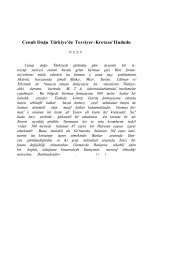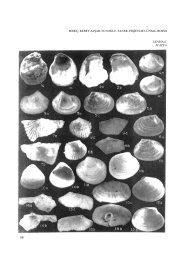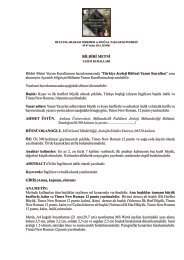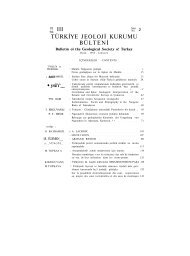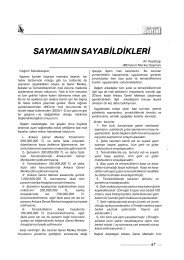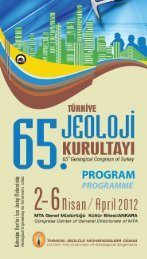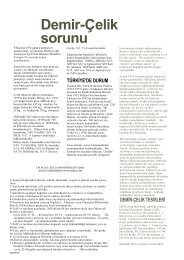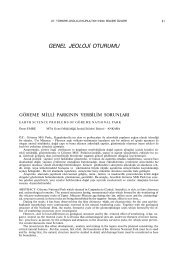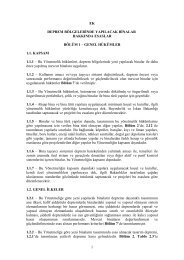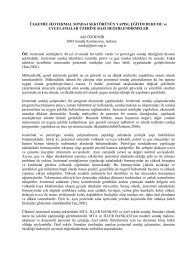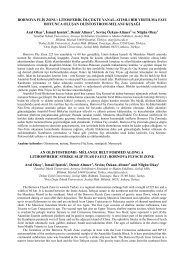Paleosismoloji ve Arkeosismoloji Palaeoseismology and ...
Paleosismoloji ve Arkeosismoloji Palaeoseismology and ...
Paleosismoloji ve Arkeosismoloji Palaeoseismology and ...
Create successful ePaper yourself
Turn your PDF publications into a flip-book with our unique Google optimized e-Paper software.
62 nd Geological Kurultai of Turkey, 13−17 April 2009, MTA–Ankara, Türkiye<br />
Application of Optically Stimulated Luminescence (OSL)<br />
on Dating Studies of Archaeological <strong>and</strong> Geological Materials<br />
Nafiye Güneç Kıyak<br />
Işık Uni<strong>ve</strong>rsity, Faculty of Science <strong>and</strong> Arts, Department of Physics, Şile,<br />
TR−34980 İstanbul, Turkey (E-mail: kiyak@isikun.edu.tr)<br />
Geological sediments <strong>and</strong> archaeological materials are surrounded by the background radiation that<br />
originates from natural terrestrial radioactivity, which is present in all deposits, <strong>and</strong> from cosmic<br />
radiation. This radiation environment can store energy in the lattice structure of the minerals,<br />
particularly in quartz that compose the majority of sediments on earth crust. The amount of energy<br />
stored in the lattice is proportional to the burial time <strong>and</strong> some permanent changes taking place in the<br />
lattice allow us to get valuable information about the history, in other words, about the age of the<br />
buried materials. As a physical technique, luminescence is based on these solid state properties of<br />
mineral grains <strong>and</strong> used to determine the depositional age of sediments <strong>and</strong> artifacts by measuring the<br />
energy stored within the electronic lattice of the minerals during burial time. The clock-resetting e<strong>ve</strong>nt<br />
in this technique is the last heating to a temperature abo<strong>ve</strong> 400 °C such as ceramics <strong>and</strong> pottery, or the<br />
last exposure to light such as earthquake <strong>and</strong> tsunami e<strong>ve</strong>nts. In recent years there has been convincing<br />
evidence that many different types of sediments can be dated by luminescence techniques, particularly<br />
by Optically Stimulated Luminescence (OSL). This technique produces ages from 50 years to about<br />
500 ka <strong>and</strong> allows dating of sediments <strong>and</strong> artifacts that could not be dated directly by other<br />
con<strong>ve</strong>ntional methods due to some limitations.<br />
In this study we aim to present a brief description of luminescence techniques <strong>and</strong> some geological<br />
<strong>and</strong> archaeological applications performed <strong>and</strong> to discuss potential problems.<br />
Key Words: luminescence, dating, optically stimulated luminescence, OSL, geoarchaeology, quartz<br />
1007



